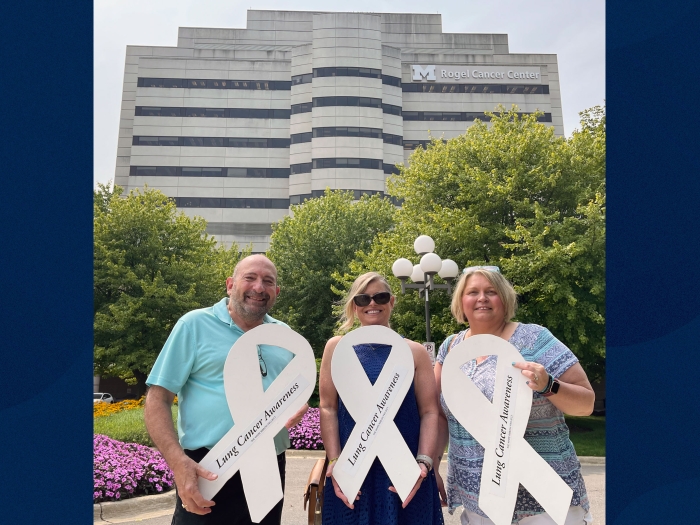Five-day limit from Michigan’s largest insurance company didn’t lead to increased pain levels or decreased satisfaction after common surgical procedures
11:00 AM
Author |

Worries that surgery patients would have a tougher recovery if their doctors had to abide by a five-day limit on opioid pain medication prescriptions didn’t play out as expected, a study finds.
Instead, patient-reported pain levels and satisfaction didn’t change at all for Michigan adults who had their appendix or gallbladder removed, a hernia repaired, a hysterectomy or other common operations after the state’s largest insurer put the limit in place, the study shows.
At the same time, the amount of opioid pain medication patients covered by that insurer received dropped immediately after the limit went into effect.
On average, patients having these operations received about three fewer opioid-containing pills.
The study, which merges two statewide databases on patients covered by Blue Cross Blue Shield of Michigan, is the first large study to evaluate whether opioid prescribing limits change patient experience after surgery.
It’s published in JAMA Health Forum by a team from Michigan Medicine, the University of Michigan’s academic medical center.
Measuring the impact of limits from patients’ perspectives
The BCBSM limit of five days’ supply, which went into effect in early 2018, is even stricter than the seven-days’ supply limit put in place a few months later by the state of Michigan.
Other major insurers and states have also implemented limits, most of which allow are seven-day limits.
Limits are designed to reduce the risk of long-term opioid use and opioid use disorder, as well as to reduce the risk of accidental overdose and the risk of unauthorized use of leftover pills.
“Opioid prescribing limits are now everywhere, so understanding their effects is crucial,” said Kao-Ping Chua, M.D., Ph.D., the study’s lead author.
“We know these limits can reduce opioid prescribing, but it hasn’t been clear until now whether they can do so without worsening patient experience.”
He noted that even the 15% of patients who had been taking opioids for other reasons before having their operations didn’t show an increase in pain or a decrease in satisfaction after the limit was put in place, even though opioid prescribing for these patients decreased.
That decrease was actually contrary to the intent of the limit, which was only designed to reduce prescribing to patients who hadn’t taken opioids recently.
Chua and several of his co-authors belong to the U-M Opioid Research Institute and Institute for Healthcare Policy and Innovation.
In addition to his work on opioids, Chua is an assistant professor of pediatrics at the U-M Medical School and a member of the Susan B. Meister Child Health Evaluation and Research Center at U-M.
Some of the authors helped develop evidence-based surgical opioid prescribing guidelines published by U-M’s Opioid Prescribing Engagement Network (OPEN), a group that recommends prioritizing non-opioid pain relief and limiting prescriptions to no more than 10 opioid pills for most of the operations considered in the study.
How the study was done
For the new study, Chua and colleagues used data from the Michigan Surgical Quality Collaborative, which collects data on patients having common operations at 70 Michigan hospitals.
Funded by BCBSM as a collaborative quality initiative under its Value Partnerships effort, MSQC surveys patients about their pain, level of satisfaction and level of regret after their operations.
SEE ALSO: How one state beat national surgery opioid trends
The team paired anonymized MSQC data with data on controlled substance prescription fills from the state’s prescription drug monitoring program, called MAPS.
In all, they were able to look at opioid prescribing and patient experience data from 1,323 BCBSM patients who had common operations in the 13 months before the five-day limit went into effect, and 4,722 patients who had operations in the 20 months after the limit went into effect.
We know these limits can reduce opioid prescribing, but it hasn’t been clear until now whether they can do so without worsening patient experience."
About 86% of both groups were non-Hispanic white, patients’ average age was just under 49, and just under a quarter of both groups had their operations on an emergency or urgent basis. Just under half were admitted to the hospital for at least one night.
About 27% of both groups had their gallbladders taken out laparoscopically, and a similar percentage had minor hernia repairs.
About 10% had an appendectomy done laparoscopically, and a similar percentage had laparoscopic hysterectomies.
The rest had more invasive procedures, like open hysterectomies major hernia repairs, or colon removal.
The percentage of prescribers who prescribed opioids to their patients having these operations did not change, but the percentage of patients who filled a prescription for an opioid did, possibly because pharmacists rejected prescriptions that weren’t compliant with the BCBSM limit, Chua speculates.
Jennifer Waljee, M.D., M.P.H., M.S., senior author of the study, notes that the MSQC database doesn’t include all types of procedures, such as knee replacements and spine surgery, which typically require larger postoperative opioid prescriptions because of their associated pain.
She indicated that it’s important to understand the impact of opioid prescribing limits on the experiences of such patients, because limits have the most potential to worsen pain for these individuals.
“Opioid prescribing limits may not worsen patient experience for common, less-invasive procedures like those we studied, because opioid prescriptions for most of these procedures were already under the maximum allowed by limits.
“But this may not be the case for painful operations where opioid prescribing was suddenly cut from an 8- to 10-day supply to a 5-day supply,” said Waljee, an associate professor of surgery at the Medical School and director of the U-M Center for Healthcare Outcomes & Policy.
She added, “The message of this study is not that we can simply go to five days’ supply across the board for operations.
“We need to understand the effects of these limits across a broad range of procedures and patients given how much pain needs vary in order to right size prescribing to patient need without resulting in additional harms.”
In addition to Chua and Waljee, the study’s authors are Thuy Nguyen, Ph.D. of the U-M School of Public Health, Chad Brummett, M.D., Amy Bohnert, Ph.D., Vidhya Gunaseelen, M.B.A., M.S., M.H.A., and Michael Englesbe, M.D. of the Medical School.
The study was supported by BCBSM Value Partnership infrastructure funding and the National Institute on Drug Abuse (DA057284, DA056438, DA048110).
Reference: “Changes in Surgical Opioid Prescribing and Patient-Reported Outcomes After Implementation of an Insurer Opioid Prescribing Limit,” JAMA Health Forum. DOI: 10.1001/jamahealthforum.2023.3541

Explore a variety of health care news & stories by visiting the Health Lab home page for more articles.

Department of Communication at Michigan Medicine
Want top health & research news weekly? Sign up for Health Lab’s newsletters today!





